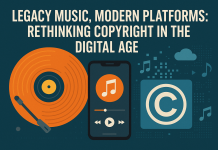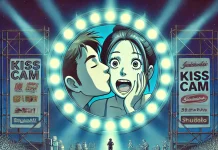We are pleased to bring to you our next guest post by Ujjawal Bhargava, third-year student of the Institute of Law, Nirma University, Ahmedabad. Ujjawal has a keen interest in the subject of Intellectual Property, specifically copyright and trademark laws.
Graffiti commonly known as ‘Street Art’ was earlier recognized as an illegal activity that marred public property. It was seen as an act of vandalism that reflected and contributed to urban decay. However, in recent times the approach for the Street Art has modified. It is now perceived as a tool to redecorate dilapidated buildings and to provide significance to walls and boundaries of buildings that were insipid. According to a scholar, the “street art has blossomed far more than spray painted-tags and quickly vanishing pieces…..painted by rebellious urbanites. In some quarters it has become High Art.”
Since there has been a change in the traditional approach towards Street Art, it is nowadays used as an instrument to attract people. With the advent of the internet and social media, these Arts have gained more recognition and are used as a promotional tool. Social media influencers use the location where these arts are painted for posing and then posting these photos on social media. Many business owners also commission works on their facades to attract the Instagram generation as they hope to get photos in front of something unique and increase their followers. In this generation of Social Media, the question that needs to be asked is whether the Street Art is at all protected by Copyright? And if it is then what are the Rights of the Street Artists or Aerosol Artists?
Whether Street Art is protected by Copyright?
This question has been answered in the affirmative in the recently decided case of CASTILLO v. G&M REALTY L.P. by the United States Court of Appeals, Second Circuit. The property in dispute was the 5Pointz, a series of dilapidated warehouse buildings in Long Island City, New York. The owner turned the disputed property into an exhibition space for Artists by appointing various Aerosol Artists. This site owing to the Arts evolved into a major center for aerosol art. It attracted numerous celebrities, thousands of daily visitors and extensive media coverage.
However, after some time the owner of the property decided to demolish this site and to build luxury apartments on it. Thus, the curator along with various other artists sued the owner under the Visual Artists Rights Act, 1990 (‘VARA’) which grants certain “moral rights” to the visual artists. The Court concluded and said that VARA provided the artists with the right of preventing their works from being mutilated or deformed, despite the impermanence of such works and granted statutory damages of 6.75 million dollars. Thus, this decision provided Street Art the protection under Copyright, thus providing the artists with exclusive rights over their work.
Rights of Aerosol Artists
The Aerosol Artists shall have both economic and moral rights over their work as they are a part of Copyright Law now. However, when business owners’ commission works on their facades by appointing these artists, the ownership and economic rights of the art are transferred to the Business owners. When these artists have transferred their economic rights they are only left with their Moral Rights. In times of Social Media where people and social media influencers post their photos using these arts as background, it is imperative to protect the Moral Rights of these Artists.
The basis for Moral Rights is found in the Personality Theory by Hegel which is one of the justifications of Intellectual Property. As per Hegel, individuals have moral claims to their own talents, feelings character traits, and experiences. In some cases these talents or feelings may merge with an object, thus these moral claims should be expanded to intangible works as well.
Pertinently, according to Article 6bis of the Berne Convention for the Protection of Literary and Artistic Works the authors have the Right of Attribution. Thus, the author of the work shall have the right to claim authorship of their work even after they have transferred their economic rights. This is also known as the Right of Paternity. Moreover, as held in CARTER v. HELMSLEY-SPEAR, INC. VARA creates a scheme of moral rights for Artists which includes the Right of Attribution. This right generally “consists of the right of an author to be recognized by name as the author of his work.”
Thus, it can be said that Aerosol Artists have the right to be recognized whenever their work is being used. It is high time that people using the work of these Artists should be made aware that Street Art is protected under copyright and consequently, provide credits to the Artist.
Another right provided to the author of a work under Article 6bis of the Berne Convention for the Protection of Literary and Artistic Works is the Right of Integrity. This right provides the author with the right not to have his or her work subjected to derogatory treatment. Derogatory Treatment means doing anything in relation to the work which hinders the reputation or honour of the author. For Artistic works like Street Art it include distorting, mutilating, altering the work or exhibiting it in public in a way that prejudices the author’s honour or reputation.
Pertinently, in case of Street Art the honour or reputation of the artist can be hindered when his art is placed in a derogatory context. Illustratively, a religious painting being put in a crude context. It can also be derogatory when it is used for another purpose and it does not match the views of the author. Thus, it will not be a gaffe to say that Aerosol artists have the right not to have his or her work subjected to derogatory treatment.
Conclusion
From being known as an act of vandalism to being used for the purpose of promotion and attracting people, the notion of Street Art has come a long way. No one would have envisaged the progress that the Street Art has made and it would be a part of the Copyright Law. It is high time that the artists know about the rights that they have. They have economic rights and moral rights over their work.
With the advent of the Internet and Social Media, the rights of these Artists are being infringed more than usual as Social Media Influencers use their work and do not give credits after using their work. However, as Social Media is an expansive platform it would be a herculean task for the artists to know that their right has been infringed or to know who has used their work as Internet brings anonymity. Thus, it would not be a gaffe to say that it is not pragmatic for the artists to use their rights completely in the times of Social Media.


















Comments are closed.